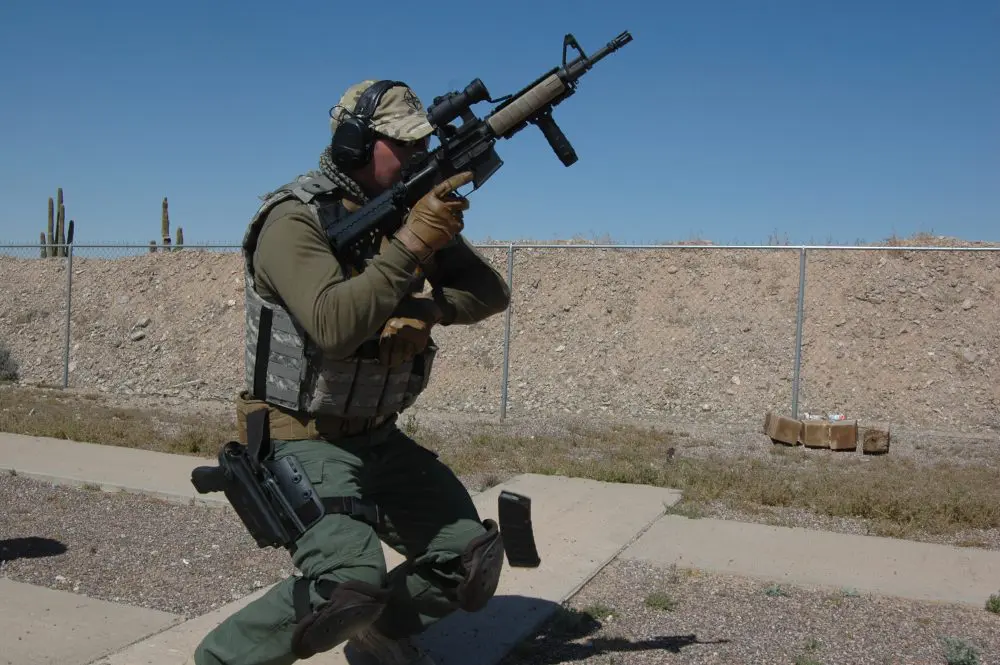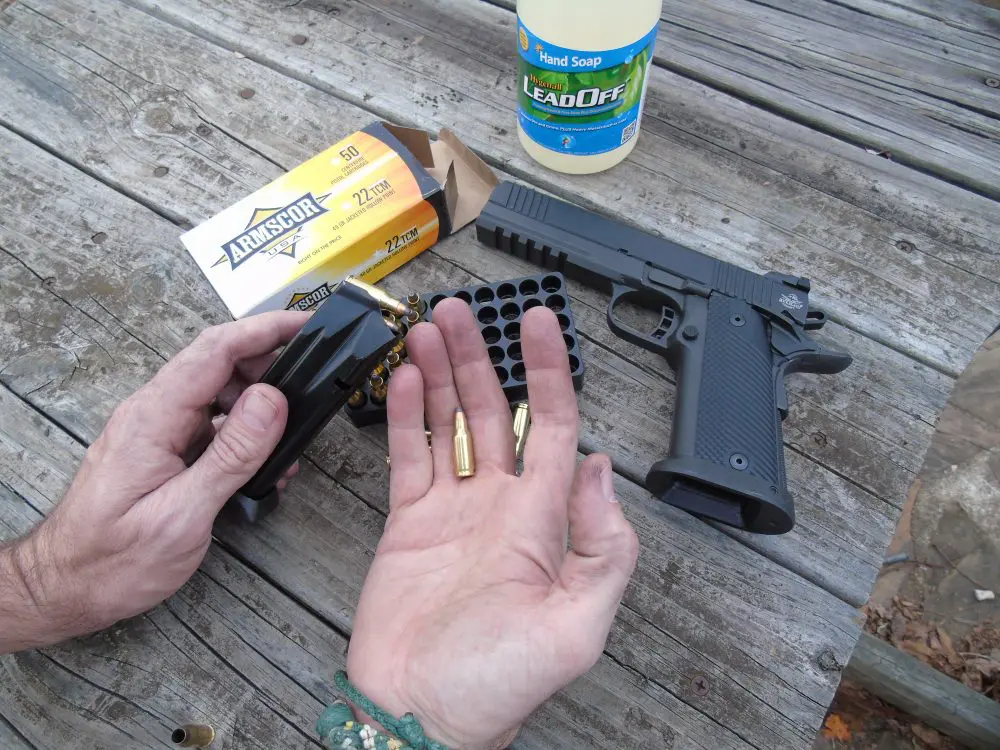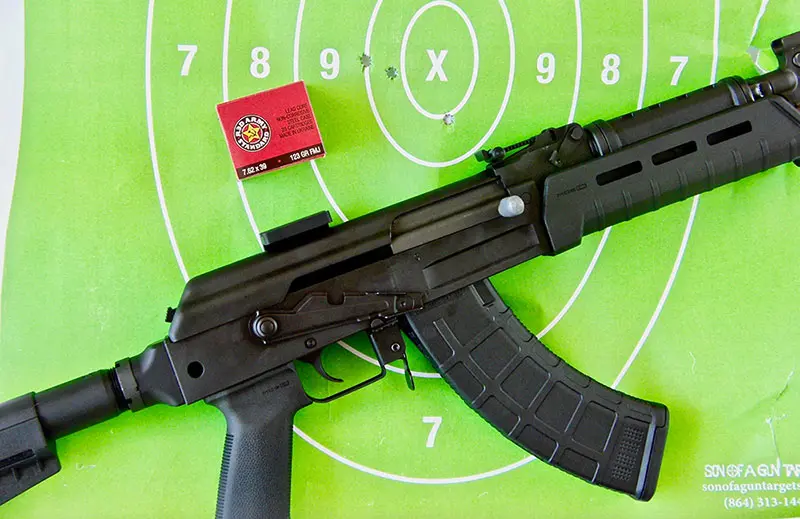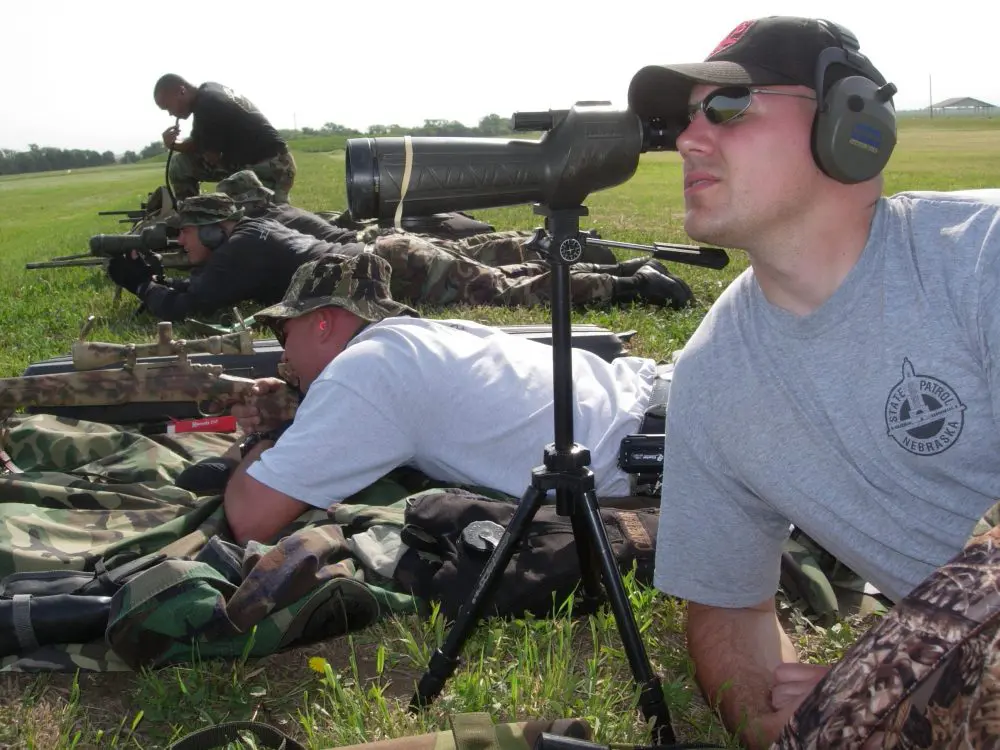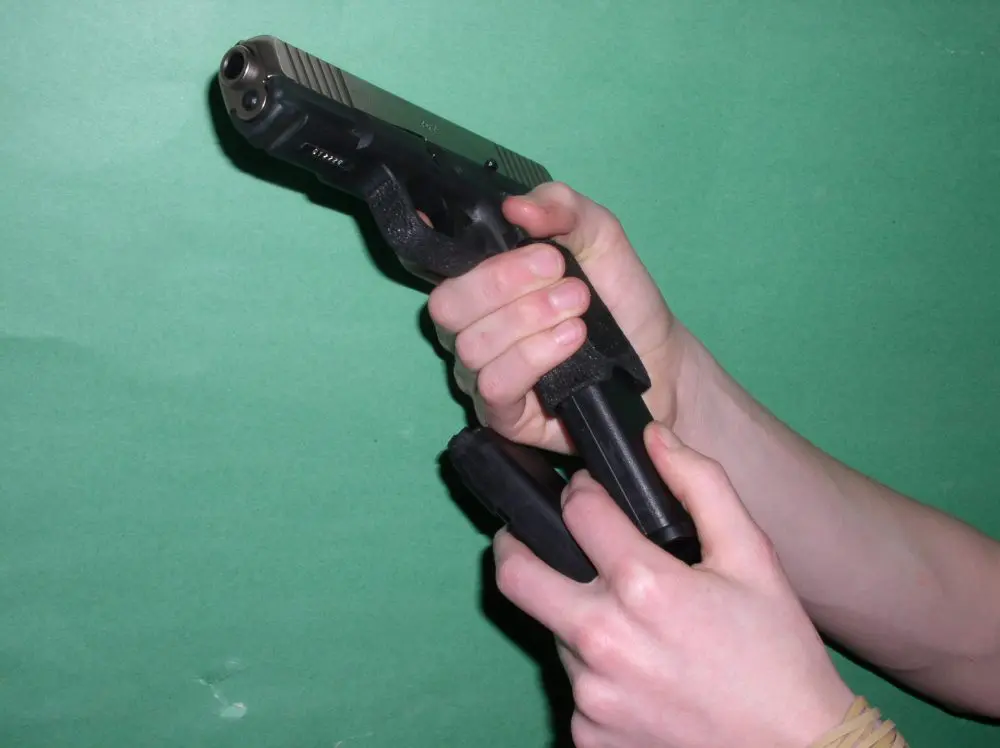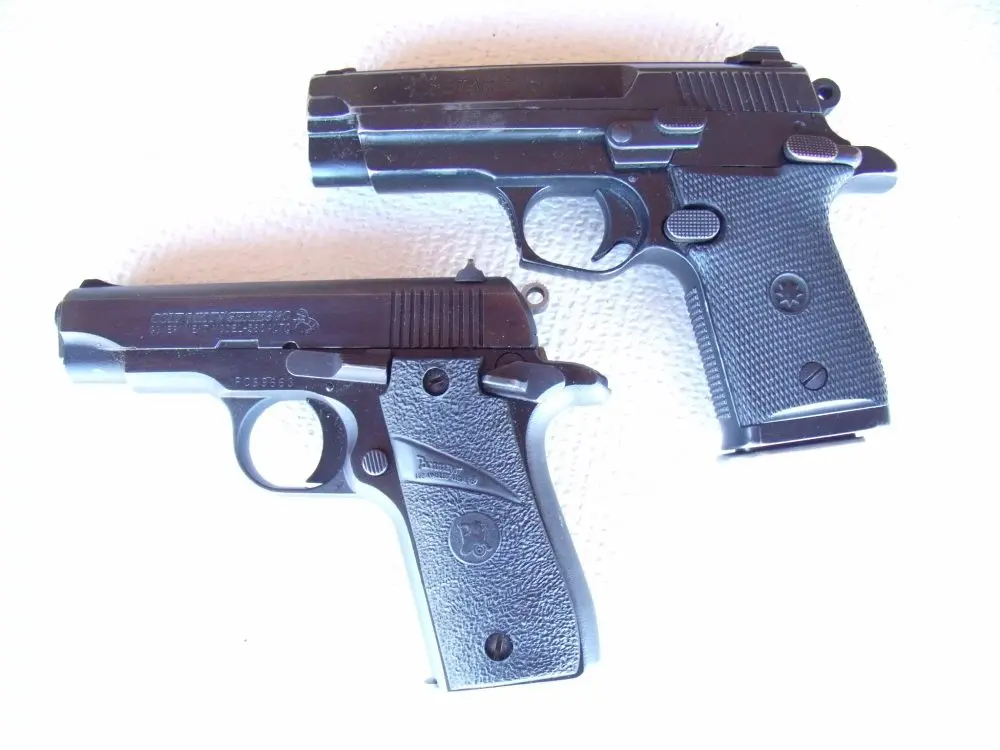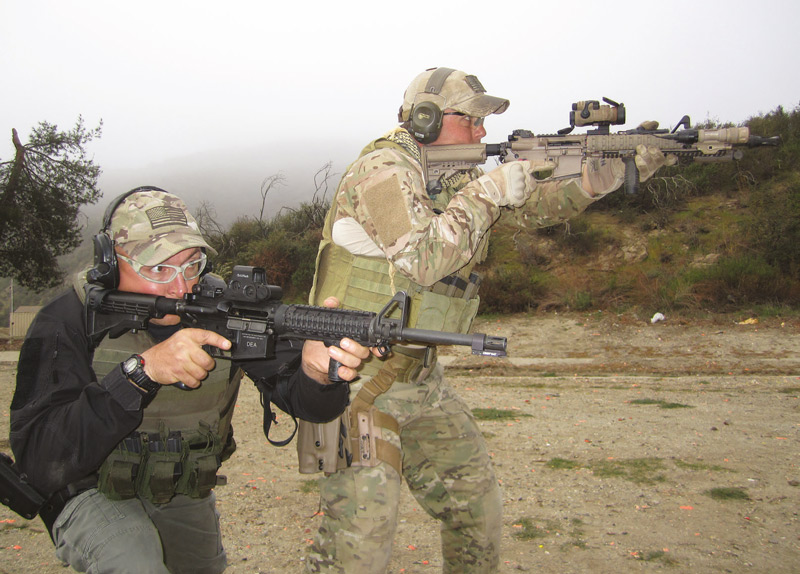
I reported to the Tactical Firearms Training Team (TFTT) range in the mountains outside Los Angeles, California, to attend the CQB/Tactics Instructor Course. TFTT is a small company directed by Max F. Joseph, a former Reconnaissance Marine who has been in the tactical instruction business, as they say, “since before it was cool.” To increase student interactions, class size for CQB/Tactics Instructor is limited to eight or less. The range, located in Burro Canyon Shooting Park, is spartan but functional.
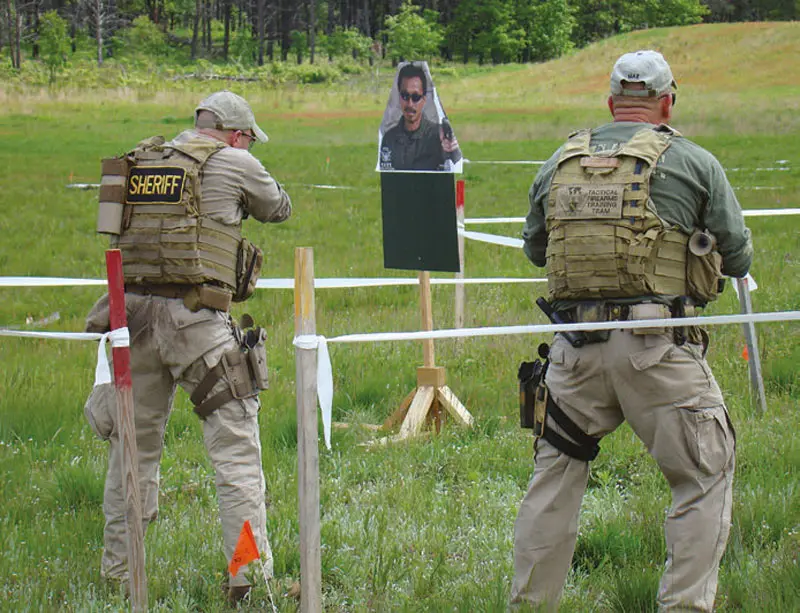
Table of Contents
BACKGROUND
This was not my first course with Max. In fact, it was my third in less than a year. When I became a firearms instructor for my agency, I was acutely aware that although I had a certificate, I was a long way from being an expert. I don’t know the color of the boathouse at Hereford— hell, I don’t even know if there’s a lake. Out of necessity, I sought out more training everywhere I could get it.
Unfortunately, there are a lot of charlatans out there. Like online dating services, what’s advertised ain’t always what you get. The Tactical Shooting Instructor course put on by one organization (I won’t say which, but trust me, you’ve heard of them) was so poorly taught that I’ve had nothing to do with them ever since. A colleague had attended several courses with TFTT, so when our budget permitted, we brought Max Joseph in for a customized class. That first training event with TFTT was a dose of reality, and it left me motivated and hungry for more.
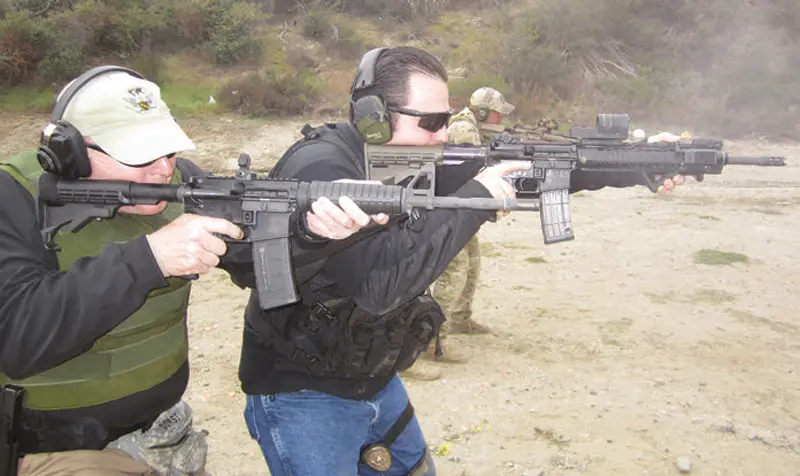
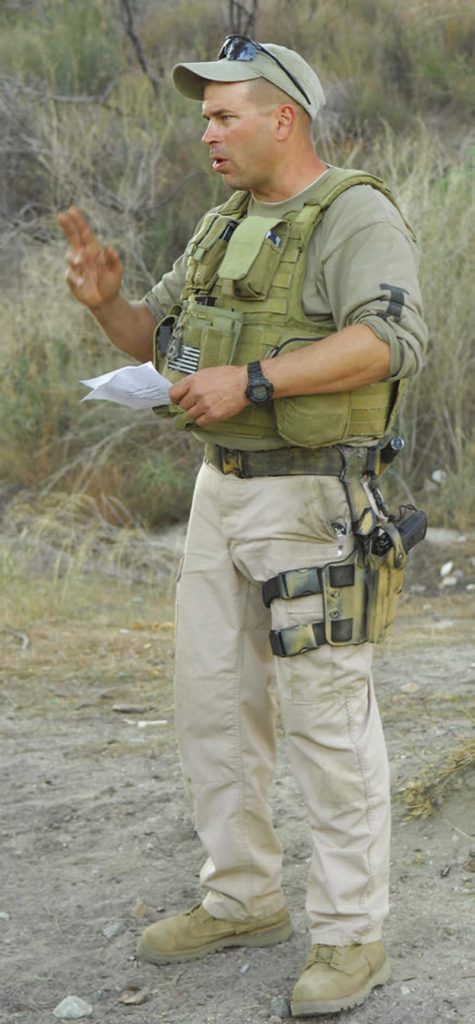
TRAINING DAY 1
TD1 opened with Max showing us his method for setting up a range and the reasoning behind it. Although “combat” courses of fire may require a different layout, the majority of our training was done using this standard layout, which was simple to prepare and required minimal time to recock after each drill.
We went into the range classroom for a brief lecture by Max on the role and responsibilities of the tactical instructor. Max teaches that the tactical instructor must be physically fit, set the example, wear his gear at all times, and be able to demonstrate every technique to standard.
Planning and preparation for a class were emphasized repeatedly. “Never miss in a demo” became our unofficial motto. The tactical instructor must be able to explain the reasons for each action taken or not taken, and to develop programs of instruction specific and pertinent to their team. In short, “Look the Part, Act the Part, Know Your Trade.”
Safety is emphasized at all times during TFTT courses, but without the artificialities often associated with training on a flat range. The rules are “Don’t do something in training you wouldn’t do on an operation. Don’t do something on an operation you wouldn’t do in training.”
After a brief period in the classroom, we went out to the range for evaluation shoots with handgun and rifle. Every day began in this manner. Handguns were shot from seven to 25 yards and rifles from 50 to 100 yards.
Max pointed out that many law enforcement agencies do not train their officers to employ a rifle at the ranges it is capable of. Hitting a stationary target at 15 yards with a rifle is no measure of proficiency—a fact demonstrated when he took students back to 100 yards.
The evaluation shoots were not lengthy, but required shooters to demonstrate proper weapon handling and acceptable combat accuracy from a variety of positions. Max believes in “serious gear for serious shooters,” so everything is done in full kit.
Speaking of combat accuracy, TFTT designed and uses several photo targets. The targets are realistic photos of a threat, with faint critical hit zones in the thoracic cavity and ocular window. The hit zones correspond to those of an IPSC target, but the lines are faint enough that they are invisible beyond seven yards. This forces shooters to place their shots based on human anatomy rather than a geometric construct, but still provides a clearly defined hit zone for scoring. Having employed these for training with my agency, feedback has been universally positive.
The remainder of TD1 was spent on Position Sul, kneeling fire, lateral movements during the draw, and two-man tactics.
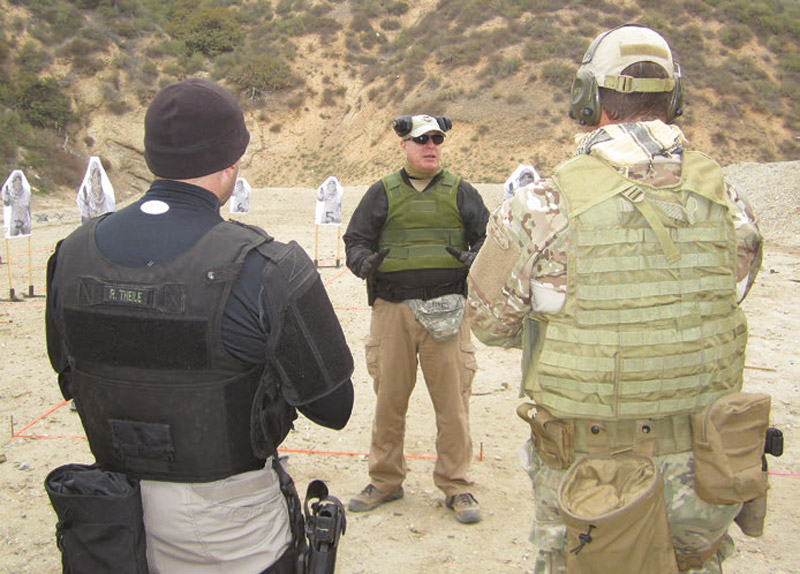
Two-Man Tactics is one of TFTT’s flagship courses. The most common and basic tactical unit worldwide is the two-man team. Despite this, most tactical instruction goes straight from individual techniques to training a full team. Two-Man Tactics bridges the gap between the lone operator and SWAT. We learned partner cover drills, highlow drills, and sidestepping around the lead man to engage threats to the front. Each technique was practiced first with handguns only, then with rifles.
The round count for all TFTT classes I have attended has been very reasonable. Targets are checked, taped, and reset frequently. Shooters are accountable for every round they fire, and every miss is analyzed. Every engagement is broken down for mechanics, weapon manipulation and shot placement. Over the course of four days, I expended just over 400 rounds each with my handgun and rifle.
At the conclusion of TD1, Max gave out homework assignments. Not having had homework for 19 years, this came as a surprise. This pattern was repeated each day. Max assigned each student one classroom presentation, one range class, and a sample program of instruction (POI) to prepare.
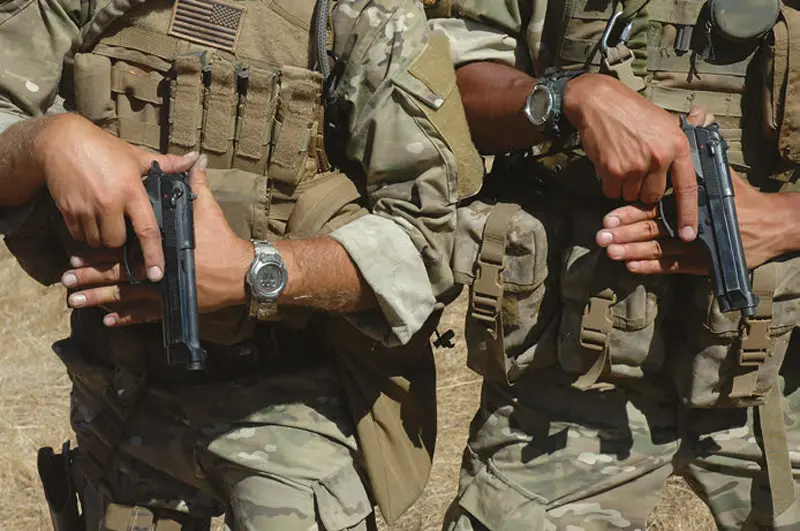
TRAINING DAY 2
TD2 began with a review of the previous day’s materials and prep for the written exam. You read that right—passing Max Joseph’s CQB Instructor Course requires satisfactory performance in assigned classes, mastery of the course material, and a comprehensive written exam which must be passed with 100% correct answers. Fortunately, the written exam is multiple choice—you can choose to give the correct answers, or you can choose to give incorrect answers. No pressure….
Each student then presented the lessons assigned to them the previous afternoon. These included the fundamentals of marksmanship (with demonstration), five-count draw, safety brief, and advantages of the two-man team. Each student was critiqued afterward by their fellows and Max. These critiques focused on both the substance of the class and the method of presentation. The lessons gave a great deal of insight into each instructor’s personality, background and confidence with the material.
After the classroom presentations, it was out to the range for the rest of the day. After another evaluation shoot, each student presented their live-fire classes, which were all two-man tactical drills. The remainder of the day was spent in shooting drills, medevac procedures, and more test review.
Students rotated duties as instructor, and throughout the day, Joseph would quietly direct shooters to perform a drill incorrectly or ask a question probing the instructor’s comprehension of the material.
Max stresses the need for an instructor to have command presence on the range. That need has been validated by my own experiences teaching groups of Type A overachievers. If you do not run the class, the class will run you—and then run you over! While it isn’t necessary to bark orders or belittle anyone, the instructor must be clearly and unquestionably in charge.
At the conclusion of this training day came more homework: one classroom presentation, one sample POI for a day of training, and one live-fire class.
TRAINING DAY 3
TD3 began with more test review, then classroom presentations by students. At this point, those who were not accustomed to small-group instruction were becoming noticeably more confident and polished in their presentation. Then it was out to the range for more eval shoots and close-quarter battle techniques.
Max Joseph begins all CQB instruction with a tape house—a diagram of a building laid out on the ground with spikes and engineering tape. Although I had seen this method used before, it was always for dry-fire walk-throughs. Max’s method, coupled with careful target placement, permits safe use of live fire in the tape house.
It was this technique more than any other that had grabbed my attention during my first course with TFTT.
CQB is a bread-and-butter task for my agency, and I am always looking for better ways to teach and conduct this critical task. The method TFTT teaches is dynamic and based around an activeshooter situation, but I have found that it is readily adapted to deliberate clearing. It has the martial virtue of simplicity. TFTT teaches a CQB room-clearing method that is based around the twoman tactics learned on the flat range. With an understanding of the principles of CQB, it is the easiest method to learn that I have encountered anywhere.
Starting with two-man room clears, we eventually progressed to three-man clears and then to full team (four or more) CQB. Priorities of clearing, movement inside the room, clearing procedures, and setup for the next danger areas were covered in simple, direct terms.
After full-team CQB, Max added what the military terms “consolidate and reorganize,” which are the procedures to be followed after the objective has been secured—domination of the stronghold, search and recovery of materiel or personnel, consolidation of hostages and prisoners, and evacuation of personnel and equipment. All in all, another very full and worthwhile training day. Then more homework….
TRAINING DAY 4
A final eval shoot, this time for grade, led off TD4. Fortunately, all students met the standard. We moved on to the student-prepared live-fire drills, where my shooting partner, a Navy service member, put on a great rifle course of fire with a lot of dynamic movement and reactive shooting drills.
Following this, we went into the classroom and took our written exam. Having spent every break during the previous three days reviewing for the exam, this was certainly the easy portion of the day’s work. I appreciated the written exam—something of a rarity in the tactical world. The exam is not intended as a substitute for practical ability, but to serve as a check to ensure that students have retained critical information and can explain the “when and why” to others.
After a review of CQB in the tape house, we headed to the shoot house for several dry- and live-fire runs. Building more onto the established framework, we now added control measures, exterior movement and approach, and manual breaching. Due to the small size of the class, every student performed every duty on the team through multiple evolutions. Before I knew it, TD4 was finished and the course was over.
ASSESSMENT
If the TFTT CQB/Tactics Instructor Course has a drawback, it is brevity. A great deal of ground is covered in four days. I had the advantage of prior exposure to TFTT’s methods, so I went into the course looking to refine and polish my instructor skills. This was not a CQB course per se. CQB is simply the vehicle used to assess and refine instructor ability, in the same manner that the U.S. Army Ranger School uses small-unit patrols to teach combat leadership. Nevertheless, an extra day or two in the shoot house would allow greater depth and add great value to the class.
Having insight from Max on planning and preparation for training and dealing with common pitfalls was extremely valuable to me. Max places a premium on efficiency of time and resources in planning a training event.
Max Joseph is a consummate professional who is technically knowledgeable and brings command presence to the range. He is a charismatic speaker who conveys a great deal of his enthusiasm to students, but he speaks with clarity and precision, leaving no doubt as to what he expects. Max prepares diligently for every class, and it shows in his fluid and confident delivery. He leads by example, demonstrating every drill to standard. In class, I have never seen him without his body armor and full tactical gear.
My assessment of the TFTT CQB/ Tactics Instructor course is simple: “All killer, no filler.”
Any questions?
